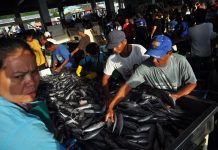More than two months after the country was placed under a state of national emergency, the number of unique COVID-19 testing has left plenty to be desired both from government officials and critics who are agreed on the need to conduct mass testing.
The only problem is, 65 days after the declaration of state of health emergency, both government and critics still cannot come to the same terms and understanding what is mass testing.
Expectations and definitions have swung between testing all to “expanded targeted testing,” which the government is now using to the general but vague mass testing.
The latent term the government is now using was in reaction to the backlash on Presidential Spokesperson Harry Roque’s quipped that the government is not conducting mass testing for everybody.
The controversy triggered an avalanche of definition what is mass testing.
As backgrounder, the Department of Health has targeted 30,000 unique COVID testing by end of May. But as of May 14, the figure was just slightly over 10,000. Not for the reason that it was lacking in effort. The infrastructure and facilities are simply not enough to meet the target and in many cases these are overwhelmed because of the surge of testing being done.
When Inter-Agency Task Force head Carlito Galvez announced on April 3 that the government would begin mass testing by April 14, he was banking on the projected increase in the number of testing centers, which at that time were just a dozen nationwide. The IATF likewise said the number of testing would reach 10,000 a day by April 30. Unfortunately, the target was not met as the figure was only in the vicinity of 4,000 tests on the said date.
Aggravating the shortfall in target is the very low testing rate per 1,000 populations. Just 0.98 tests per 1,000 populations as of May 1. The figure definitely made a strong case for advocates of ‘mass testing.’
Since then, the number of unique tests has ballooned to 207,823 as of May 15 but still at an alarmingly low of 1.98 per 1,000 population although the testing centers have increased to close to 30 facilities nationwide. Even in that category, the IATF likewise failed to accomplish its target of 60 testing centers by end of May.
Ranged against other countries, the Philippines had been lagging in the test per population category. Malaysia has conducted 11.15 tests per 1,000 populations, Vietnam at 2.73 and Singapore at 43.88. At 2.14 tests per thousand population, the Philippines is just slightly better than Thailand’s 1.78 but which has far fewer incidences and fewer deaths.
These underachieving figures have provided those who are critical, more so those who are anti-government forces, ammunition and an issue against government anti-COVID measures.
‘Mass testing’ is a catchy slogan, has quick appeal on the memory of and plays into everybody’s fear of uncertainty. The ‘mass’ in the slogan, particularly, identifies with the general public.
Unfortunately, the fight against COVID crisis requires specific and science based action plans that are identifiable and doable. All measures should have unqualified certainty and manifest urgency.
This is where ‘mass testing’ as a slogan and approach to fighting the COVID crisis leaves wanting and lacking – the sense of urgency and lack of clear definition.
The fact that the debate has sunk to what is the definition of mass testing points to the shallowness and vagueness of the slogan.
University of the Philippines clinical assistant professor Edsel Maurice Salvana summed it up scientifically in his FB post on May 19, argued and presented what testing are undertaken and how these are administered and for what purpose.
He clearly states that, “If you define mass testing as population-based testing, meaning testing everyone regardless of symptoms and exposure in order to pick out those infected, then it is NOT feasible and NOT useful.”
Dr. Salvana further argued that, “testing everyone to determine the percentage of the population exposed is epidemiologic testing and can be done with a representative sample. It is a waste of money to test more than you need.”
In sum, he said testing should have specificity and there should be priority order of them.
Random sampling is an elemental option to assuage public demand for ‘mass testing.’
But testing everybody is simply impossible besides the time and effort wasted conducting these.
If there is any consolation, both the government and its critics are on the same page as far as the impracticality of testing everybody.
So where lies the confusion?
It is in the induced but unmerited debate on a non-issue that is mass testing as everybody has his/her own definition and order of priority in testing. What perhaps separates the two contending thoughts is the number of tests that will make everybody comfortable and it is up to the medical experts and the medical community to define it.
We have to accept that everybody has his/her agenda in formulating slogans.
The last thing we need is to fall into the trap of debating and arguing what it is.



